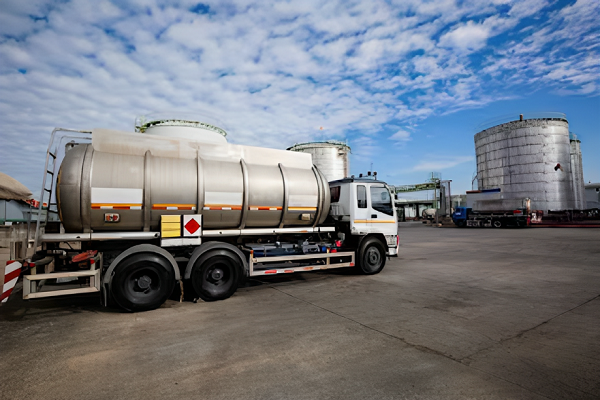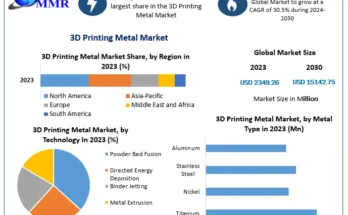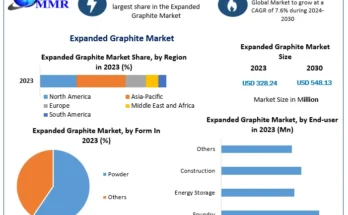Global Chemical Tankers Market has valued at USD 32.54 billion in 2022 and is anticipated to project robust growth in the forecast period with a CAGR of 4.6% through 2028. Chemical tankers are cargo vessels utilized for the transportation of liquid chemicals in large quantities. These tankers are categorized based on size, fleet type, and the type of chemical they carry. They must adhere to strict safety regulations to ensure the secure transportation of hazardous and flammable chemicals. The range of chemicals transported in bulk has significantly expanded, leading to the utilization of specialized ships to meet the growing demand. In addition to the specialized vessels, the crew involved in the entire process requires specific training, from the construction and design of the ships to the loading, storage, discharge, and tank cleaning operations. The substantial concentration of chemical production and the growing global demand primarily contribute to the expansion of the market. The evolution of shale gas stands as a key factor influencing market growth. Organic chemicals possess a wide range of applications and garner significant interest due to their potential industrial uses. Anticipated trade activity, coupled with favorable charter rates for waterborne transportation, is expected to provide sustained support to the market during the forecast period. Fleet operators are actively developing innovative technological solutions to enhance the global supply of Chemical Tankers. Given the hazardous nature and diverse attributes of chemical shipping, tanker coating is indispensable. Furthermore, the increasing consumer concerns regarding healthy and sanitary food are projected to drive trade in vegetable/animal oil and fats, thereby contributing to the expansion of the global Chemical Tanker shipping market in the forecast period.
Key Market Drivers
Growing Demand of Chemical Tankers in Chemical Industry
The chemical industry plays a vital role in modern society, providing the essential materials and substances needed for a wide range of products and processes across various sectors. From plastics and pharmaceuticals to agrochemicals and specialty chemicals, an efficient and specialized transportation system is crucial. The growing global demand for chemical tankers is a key driver for the expansion and sustainability of the global chemical tankers market. With an increasing global population and urbanization, the need for chemicals is on the rise. According to the International Council of Chemical Associations (ICCA), the global chemical industry is projected to continue expanding due to evolving consumer preferences, industrialization, and technological advancements. This surge in chemical production directly translates into a higher demand for efficient and reliable transportation methods, where chemical tankers excel. Chemical tankers are specifically designed to accommodate a wide range of chemical requirements.
They feature segregated cargo holds, advanced tank coatings, and temperature-controlled compartments to ensure the safe and efficient transportation of diverse chemicals over long distances. Safety is of utmost importance when it comes to transporting chemicals. Accidents, spills, or leaks can have severe environmental, health, and economic consequences. The chemical industry is subject to strict safety regulations and international conventions that govern the transportation of hazardous materials by sea. Chemical tankers are built and operated to meet these stringent standards, providing secure containment and prevention measures to minimize risks. The growing emphasis on safety and environmental stewardship further drives the demand for high-quality chemical tanker services. As chemicals are often produced in one region and consumed in another, the efficient and secure movement of chemicals across oceans and continents is essential. Chemical tankers enable the globalization of the chemical industry by offering a reliable means of transporting bulk quantities of chemicals over long distances.
Download FREE Sample Report @ https://www.techsciresearch.com/sample-report.aspx?cid=2571
Growing Requirements of Specialized Transport
The global chemical tanker industry plays a crucial role in the modern supply chain, facilitating the transport of various chemicals, petroleum products, and industrial gases across the world’s oceans. As industries continue to expand and diversify, the specialized transportation of these essential materials becomes increasingly vital. Chemicals encompass a wide range of substances, each with unique properties, handling requirements, and potential hazards. From corrosive acids to flammable liquids, the transportation of chemicals necessitates strict safety measures and dedicated equipment. Chemical tankers are purpose-built to accommodate this diversity, featuring segregated cargo holds to prevent cross-contamination and advanced systems for temperature control and ventilation. The need to safely transport these diverse chemicals drives the demand for specialized transport solutions. Regulatory bodies like the International Maritime Organization (IMO) impose rules that chemical tanker operators must adhere to, covering aspects such as cargo segregation, stability, emergency response procedures, and more. Compliance with these complex regulations requires chemical tanker operators to invest in specialized training, equipment, and operational procedures, resulting in a demand for skilled professionals and well-equipped vessels. Some chemicals are highly sensitive to temperature changes, light exposure, or even minor impurities. Chemical tankers are equipped with advanced technology to monitor and control these conditions, ensuring that chemicals reach their destination in the same state as when they were loaded. The ability to manage these intricate handling procedures sets chemical tankers apart, making them an essential component of the supply chain. As industries progress, the demand for increasingly specialized chemicals continues to rise. These chemicals often require transportation under precise conditions to maintain their quality and effectiveness. Pharmaceutical companies, for example, rely on chemical tankers to safely transport active pharmaceutical ingredients (APIs) under controlled conditions. Similarly, the growth of the agriculture sector depends on the transportation of fertilizers and agrochemicals, which necessitate specialized transport solutions due to their nature and potential impact on crops and soil.
Growth in Technological Advancements
The global chemical tanker industry has witnessed significant transformations over the years, driven primarily by the rapid pace of technological advancements. As industries worldwide continue to evolve, the chemical tanker sector is embracing innovative technologies to enhance safety, efficiency, and environmental sustainability. A pivotal area where technological advancements have made a substantial impact is in the design and construction of chemical tankers themselves. Modern chemical tankers are engineered with advanced hull designs that optimize stability, fuel efficiency, and cargo capacity. Computational fluid dynamics (CFD) simulations are employed to model the vessel’s behavior under various conditions, enabling designers to create vessels that can navigate challenging weather and sea conditions more effectively. Additionally, the utilization of lightweight and corrosion-resistant materials improves the vessel’s structural integrity and longevity. The incorporation of digital twin technology further facilitates real-time monitoring and predictive maintenance, ensuring optimal vessel performance. Furthermore, real-time monitoring systems equipped with sensors and data analytics capabilities provide precise information regarding cargo conditions and vessel performance. This data-driven approach enhances operational efficiency, minimizes cargo loss, and improves safety by detecting anomalies and potential issues in a timely manner. Automation technologies are being deployed in various aspects of chemical tanker operations, including navigation, cargo handling, and maintenance. Automated loading and unloading systems streamline port operations, reducing turnaround times and optimizing resource utilization. Remote operation technologies enable centralized control and monitoring of multiple vessels from onshore locations, enhancing operational efficiency while minimizing crew exposure to hazardous conditions. Advances in propulsion systems, such as the development of liquefied natural gas (LNG)-powered vessels, have significantly reduced greenhouse gas emissions and air pollutants. LNG propulsion provides a cleaner alternative to conventional marine fuels, aligning with stricter international regulations aimed at reducing the maritime industry’s carbon footprint. As chemical tanker operations become increasingly digitized, cybersecurity has emerged as a critical concern. The integration of digital technologies exposes vessels to potential cyber threats, which can compromise operational safety and data security. To address this, the industry is investing in robust cybersecurity measures and training to safeguard vessels’ digital systems from unauthorized access and potential cyberattacks.
Key Market Challenges
Volatility in Oil Prices and Energy Transition
The global chemical tankers market is a vital component of the logistics network that ensures the safe and efficient transportation of chemicals, petroleum products, and industrial gases across the world’s seas and oceans. One of the enduring challenges faced by the global chemical tankers market is the unpredictable nature of oil prices. The chemical tanker industry is closely linked to the energy sector, as it transports various petroleum products such as crude oil, refined products, and petrochemical feedstocks. Sudden shifts in oil prices can impact production and consumption patterns, directly affecting the demand for chemical tanker transportation. Volatile oil prices can impact the profitability of chemical tanker operators. Rapid increases in fuel costs can erode profit margins, especially when freight rates are not adjusted immediately to account for the rise in operational expenses. As economies shift toward renewable energy sources and electric mobility, the demand for traditional petroleum products may decrease. This could impact the demand for chemical tankers transporting fossil fuels. The energy transition drives the need for new chemicals and alternative feedstocks, such as bio-based materials and renewable chemicals. Chemical tankers will need to adapt to carry these emerging products safely and efficiently.
Geopolitical Risks and Trade Disruptions
The global chemical tanker industry, an essential link in the supply chain of chemicals and petroleum products, faces a myriad of challenges, among which geopolitical risks and trade disruptions stand out prominently. One of the foremost geopolitical challenges confronting the chemical tanker market is the imposition of trade embargoes and sanctions. When nations enforce trade restrictions on particular countries, the movement of chemicals and petroleum products may face significant disruptions. Tanker operators and companies engaged in chemical transportation may encounter the need to navigate intricate legal frameworks to ensure adherence to sanctions, which could result in interruptions to established trade routes. Geopolitical dynamics can impact regulations that govern the shipping industry. Changes in environmental standards, safety regulations, or maritime policies due to political shifts can necessitate costly modifications to tanker fleets and operational procedures. This regulatory variability can lead to operational uncertainty and increased compliance costs.
Key Market Trends
Eco-Friendly Operations and Green Technologies
To prevent the introduction of invasive species through ballast water, chemical tanker operators are investing in ballast water treatment systems. These systems remove or neutralize harmful organisms, ensuring that only clean water is discharged back into the sea. Scrubber technology allows vessels to reduce sulfur emissions by washing exhaust gases before they are released into the atmosphere. As sulfur emissions regulations become more stringent, scrubbers offer a viable solution for compliance. Incorporating energy-efficient designs, such as hull optimizations and advanced propulsion systems, chemical tankers can reduce fuel consumption and emissions. These innovations enhance vessel performance while simultaneously lowering operational costs. Moreover, some chemical tanker operators are exploring the integration of renewable energy sources, such as solar panels and wind turbines, to supplement onboard power generation. These technologies contribute to reduced reliance on fossil fuels and minimize emissions during operation.
Evolution of Shipping Routes
As the world becomes more interconnected and industries continue to grow, the routes taken by chemical tankers are adapting to accommodate changing demand patterns, optimize efficiency, and address environmental concerns. The emergence of new economic powerhouses and changes in global supply chains have led to shifts in trade dynamics. Traditional routes are being reconfigured to accommodate growing demand from different regions. Shipping routes have expanded to include not only well-established trade lanes but also emerging markets, influencing the flow of chemicals and raw materials. The melting Arctic ice has opened up new possibilities for shipping routes, particularly the Northern Sea Route and the Northwest Passage. While still facing challenges related to ice conditions and infrastructure, these routes offer shorter paths between Europe, Asia, and North America. Arctic shipping could significantly impact the chemical tanker industry by providing more direct routes and reduced voyage times. Furthermore, the development of port infrastructure plays a crucial role in shaping shipping routes. Ports with advanced facilities for chemical cargo handling influence route decisions, enabling direct shipments to market and minimizing the need for intermediate transshipment.
Segmental Insights
Product Type Insights
In 2022, the chemical tankers market was dominated by the Vegetable Oils & Fats and is predicted to continue expanding over the coming years. Vegetable oils and fats are traded on a global scale, with production and consumption occurring in different regions. This necessitates the movement of these commodities across oceans and continents, often requiring specialized transportation solutions. Many vegetable oils and fats are sensitive to temperature fluctuations. Maintaining the appropriate temperature during transportation is crucial to preserving the quality and integrity of the cargo. Chemical tankers are designed with advanced temperature control systems that allow for the transportation of temperature-sensitive goods, making them a preferred choice for vegetable oil and fat shipments.
Fleet Type Insights
In 2022, the chemical tankers market was dominated by IMO Type 2 segment and is predicted to continue expanding over the coming years. The IMO 2 fleet type division of the Chemical Tanker Market is projected to exhibit the highest compound annual growth rate (CAGR) in terms of value and volume during the estimated period. The growth of the IMO 2 fleet type segment in the Chemical Tanker Market can be attributed to the utilization of IMO 2 Chemical Tankers for transporting vegetable oils & fats, as well as various types of chemicals such as alcohols, alkanes, and alkyl amide. Additionally, the increasing demand for bio-based lubricants is expected to drive the growth of the IMO-2 carrier chemical tanker market.
Related Reports
Hydrocolloids Market [2028] – Report & Market Share
Ink Additives Market [2028] – Forecast & Projected Growth
Table of Content-Chemical Tankers Market
- Product Overview
1.1. Market Definition
1.2. Scope of the Market
1.2.1. Markets Covered
1.2.2. Years Considered for Study
1.2.3. Key Market Segmentations
- Research Methodology
2.1. Objective of the Study
2.2. Baseline Methodology
2.3. Key Industry Partners
2.4. Major Association and Secondary Sources
2.5. Forecasting Methodology
2.6. Data Triangulation & Validation
2.7. Assumptions and Limitations
- Executive Summary
3.1. Overview of the Market
3.2. Overview of Key Market Segmentations
3.3. Overview of Key Market Players
3.4. Overview of Key Regions/Countries
3.5. Overview of Market Drivers, Challenges, Trends
- Voice of Customer
- Global Chemical Tankers Market Outlook
5.1. Market Size & Forecast
5.1.1. By Value
5.2. Market Share & Forecast
5.2.1. By Product Type (Organic Chemicals, Inorganic Chemicals, Vegetable Oils & Fats and Others)
5.2.2. By Fleet Type (IMO Type 1, IMO Type 2 and IMO Type 3)
5.2.3. By Fleet Material (Stainless Steel and Coated)
5.2.4. By Region
5.2.5. By Company (2022)
5.3. Market Map
- North America Chemical Tankers Market Outlook
6.1. Market Size & Forecast
6.1.1. By Value
6.2. Market Share & Forecast
6.2.1. By Product Type
6.2.2. By Fleet Type
6.2.3. By Fleet Material
6.2.4. By Country
6.3. North America: Country Analysis
6.3.1. United States Chemical Tankers Market Outlook
6.3.1.1. Market Size & Forecast
6.3.1.1.1. By Value
6.3.1.2. Market Share & Forecast
6.3.1.2.1. By Product Type
6.3.1.2.2. By Fleet Type
6.3.1.2.3. By Fleet Material
6.3.2. Mexico Chemical Tankers Market Outlook
6.3.2.1. Market Size & Forecast
6.3.2.1.1. By Value
6.3.2.2. Market Share & Forecast
6.3.2.2.1. By Product Type
6.3.2.2.2. By Fleet Type
6.3.2.2.3. By Fleet Material
6.3.3. Canada Chemical Tankers Market Outlook
6.3.3.1. Market Size & Forecast
6.3.3.1.1. By Value
6.3.3.2. Market Share & Forecast
6.3.3.2.1. By Product Type
6.3.3.2.2. By Fleet Type
6.3.3.2.3. By Fleet Material
- Europe Chemical Tankers Market Outlook
7.1. Market Size & Forecast
7.1.1. By Value
7.2. Market Share & Forecast
7.2.1. By Product Type
7.2.2. By Fleet Type
7.2.3. By Fleet Material
7.2.4. By Country
7.3 Europe: Country Analysis
7.3.1. France Chemical Tankers Market Outlook
7.3.1.1. Market Size & Forecast
7.3.1.1.1. By Value
7.3.1.2. Market Share & Forecast
7.3.1.2.1. By Product Type
7.3.1.2.2. By Fleet Type
7.3.1.2.3. By Fleet Material
7.3.2. Germany Chemical Tankers Market Outlook
7.3.2.1. Market Size & Forecast
7.3.2.1.1. By Value
7.3.2.2. Market Share & Forecast
7.3.2.2.1. By Product Type
7.3.2.2.2. By Fleet Type
7.3.2.2.3. By Fleet Material
7.3.3. United Kingdom Chemical Tankers Market Outlook
7.3.3.1. Market Size & Forecast
7.3.3.1.1. By Value
7.3.3.2. Market Share & Forecast
7.3.3.2.1. By Product Type
7.3.3.2.2. By Fleet Type
7.3.3.2.3. By Fleet Material
7.3.4. Italy Chemical Tankers Market Outlook
7.3.4.1. Market Size & Forecast
7.3.4.1.1. By Value
7.3.4.2. Market Share & Forecast
7.3.4.2.1. By Product Type
7.3.4.2.2. By Fleet Type
7.3.4.2.3. By Fleet Material
7.3.5. Spain Chemical Tankers Market Outlook
7.3.5.1. Market Size & Forecast
7.3.5.1.1. By Value
7.3.5.2. Market Share & Forecast
7.3.5.2.1. By Product Type
7.3.5.2.2. By Fleet Type
7.3.5.2.3. By Fleet Material
- Asia-Pacific Chemical Tankers Market Outlook
8.1. Market Size & Forecast
8.1.1. By Value
8.2. Market Share & Forecast
8.2.1. By Product Type
8.2.2. By Fleet Type
8.2.3. By Fleet Material
8.2.4. By Country
8.3. Asia-Pacific: Country Analysis
8.3.1. China Chemical Tankers Market Outlook
8.3.1.1. Market Size & Forecast
8.3.1.1.1. By Value
8.3.1.2. Market Share & Forecast
8.3.1.2.1. By Product Type
8.3.1.2.2. By Fleet Type
8.3.1.2.3. By Fleet Material
8.3.2. India Chemical Tankers Market Outlook
8.3.2.1. Market Size & Forecast
8.3.2.1.1. By Value
8.3.2.2. Market Share & Forecast
8.3.2.2.1. By Product Type
8.3.2.2.2. By Fleet Type
8.3.2.2.3. By Fleet Material
8.3.3. South Korea Chemical Tankers Market Outlook
8.3.3.1. Market Size & Forecast
8.3.3.1.1. By Value
8.3.3.2. Market Share & Forecast
8.3.3.2.1. By Product Type
8.3.3.2.2. By Fleet Type
8.3.3.2.3. By Fleet Material
8.3.4. Japan Chemical Tankers Market Outlook
8.3.4.1. Market Size & Forecast
8.3.4.1.1. By Value
8.3.4.2. Market Share & Forecast
8.3.4.2.1. By Product Type
8.3.4.2.2. By Fleet Type
8.3.4.2.3. By Fleet Material
8.3.5. Australia Chemical Tankers Market Outlook
8.3.5.1. Market Size & Forecast
8.3.5.1.1. By Value
8.3.5.2. Market Share & Forecast
8.3.5.2.1. By Product Type
8.3.5.2.2. By Fleet Type
8.3.5.2.3. By Fleet Material



